Jumièges Abbey
![]() To see the pictures included in the article at full-size,
simply click on the image.
To see the pictures included in the article at full-size,
simply click on the image.
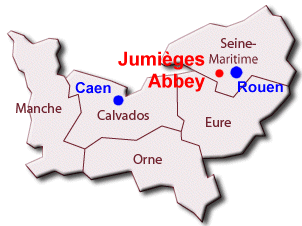
The abbey was founded in 654 (other sources say 634) by Philibert, who became its first abbot. It is situated on the north bank of the River Seine, on a narrow strip of land between the sweeping loops of the river, a few miles to the west of what is now the town of Rouen. Circumstances described as “the jealousy of certain enemies” meant that Philibert had to leave the abbey after some years, and his successor was Achard, commemorated in the name of a town some miles to the south of Jumièges - Bourg-Achard. While Achard was abbot there, the abbey flourished, and at its peak there were about 1,000 monks.
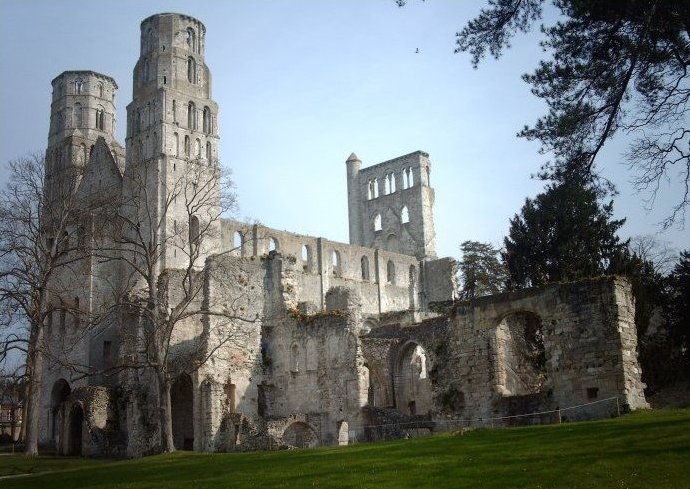
When the Viking invasions of the region took place during the ninth century, the site was largely destroyed, being burnt to the ground by the marauding Normans. Rebuilding began during the tenth century, but it was in the eleventh century that the magnificent abbey church of Notre Dame was built on the site. It is the ruins of that period and subsequent developments that form the bulk of what can be seen on the site today.
The main abbey church took about twenty years to complete, being finished in time for William, Duke of Normandy, to be present at its consecration in 1067 as William I of England - William the Conqueror. This church is described as an exceptional example of 11th-century romanesque architecture. With its two towers reaching 46 metres into the sky, it is the tallest example of that type of architecture in the region.
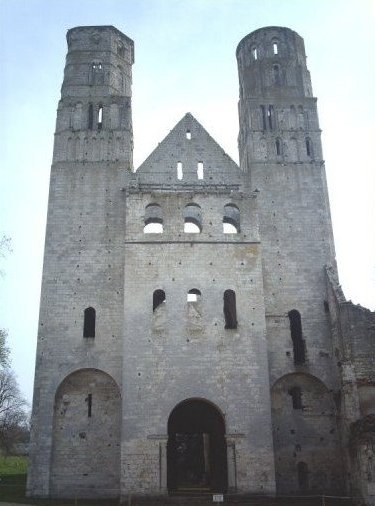
The abbey enjoyed the patronage of the Dukes of Normandy, and it became a major centre of religion and scholarship in France. It produced many renowned scholars and churchmen, including the historian William of Jumièges. It reached the peak of its status during the eleventh century, and was regarded as the model and standard for all other monasteries in the region. One of its abbots, Robert, became Bishop of London in 1044 and Archbishop of Canterbury in 1051, during the reign of Edward the Confessor. Opposition to foreigners in leading positions of state or church in England meant that he had to leave his post in about 1052 and return to Jumièges.
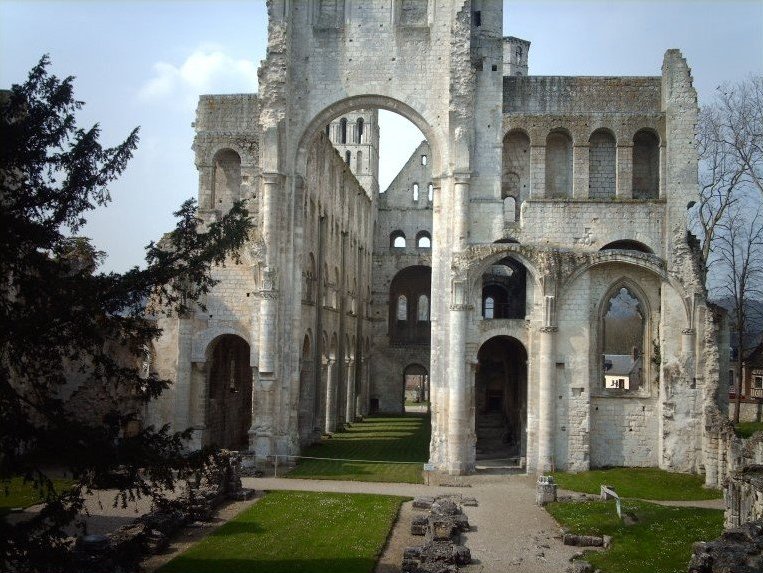
Further development work took place in later centuries, including the building of the adjacent church of St. Pierre. The abbey complex suffered in many ways during the Hundred Years War against England in the fourteenth and fifteenth centuries. Despite that, it recovered its original glory and status after the end of the Hundred Years War, but was again devastated during the French Wars of Religion during the sixteenth century. In the seventeenth century the abbey was taken over by a Benedictine congregation founded in Paris in 1618. This was the Congregation of St Maur, who took over the abbey in about 1649.
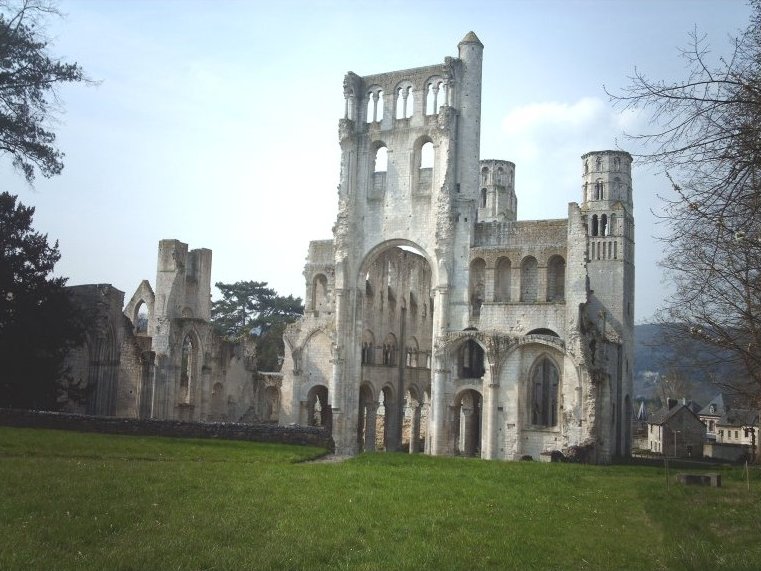
The end of the abbey as an active Benedictine community came as a result of the French Revolution, after which it was sold and then converted into a stone quarry. In 1852 the Lepel-Cointet family bought the site and prevented its total demise. It was purchased by the French State in 1946, and a programme of preservation is under way.
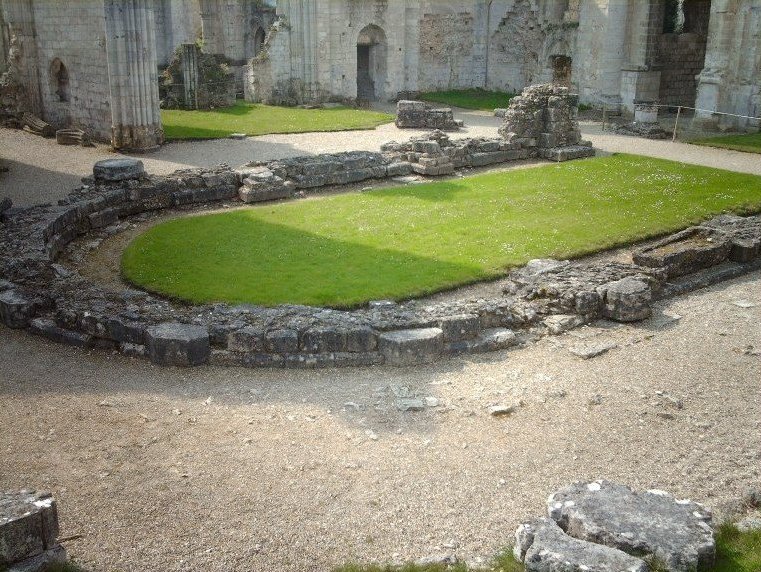
The abbey is open to the public most days of the year - but it often shuts for lunch. Its entrance is opposite the Post Office (La Poste) in the centre of the village of Jumièges. Tickets to allow access into the grounds of the abbey may be purchased in the book shop which forms the entry and exit routes into the grounds. There is a car park near to the entrance, and decent toilets by the post office too!
Links:
- The official website
for Jumièges
 Opens in a new browser window
Opens in a new browser window




 Contact Us
Contact Us